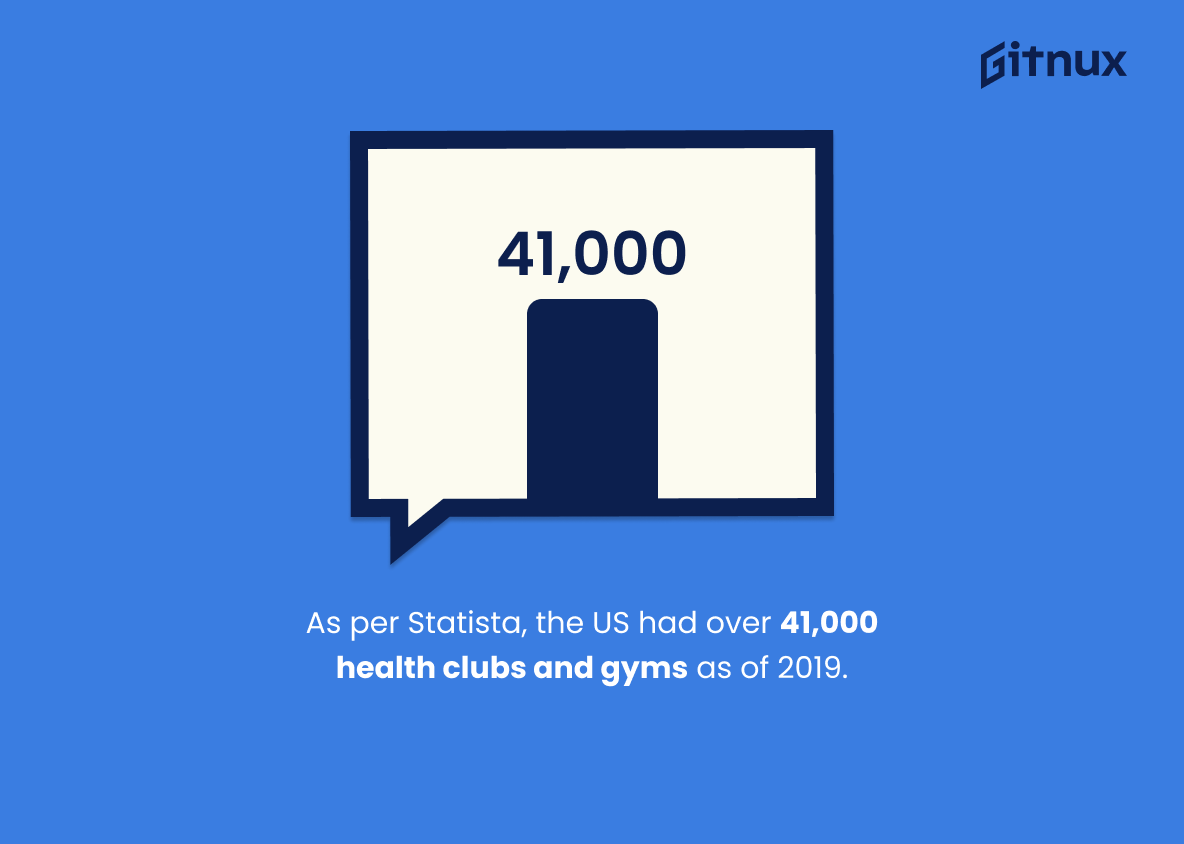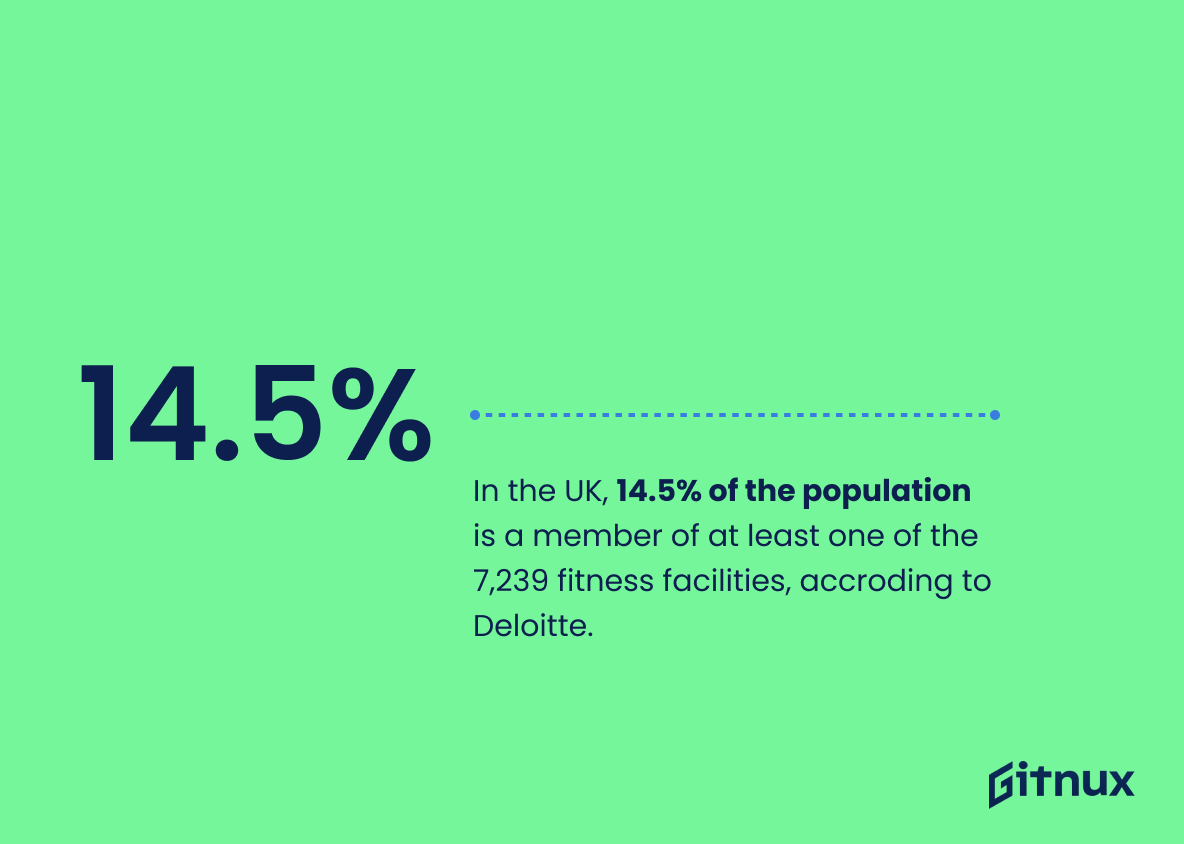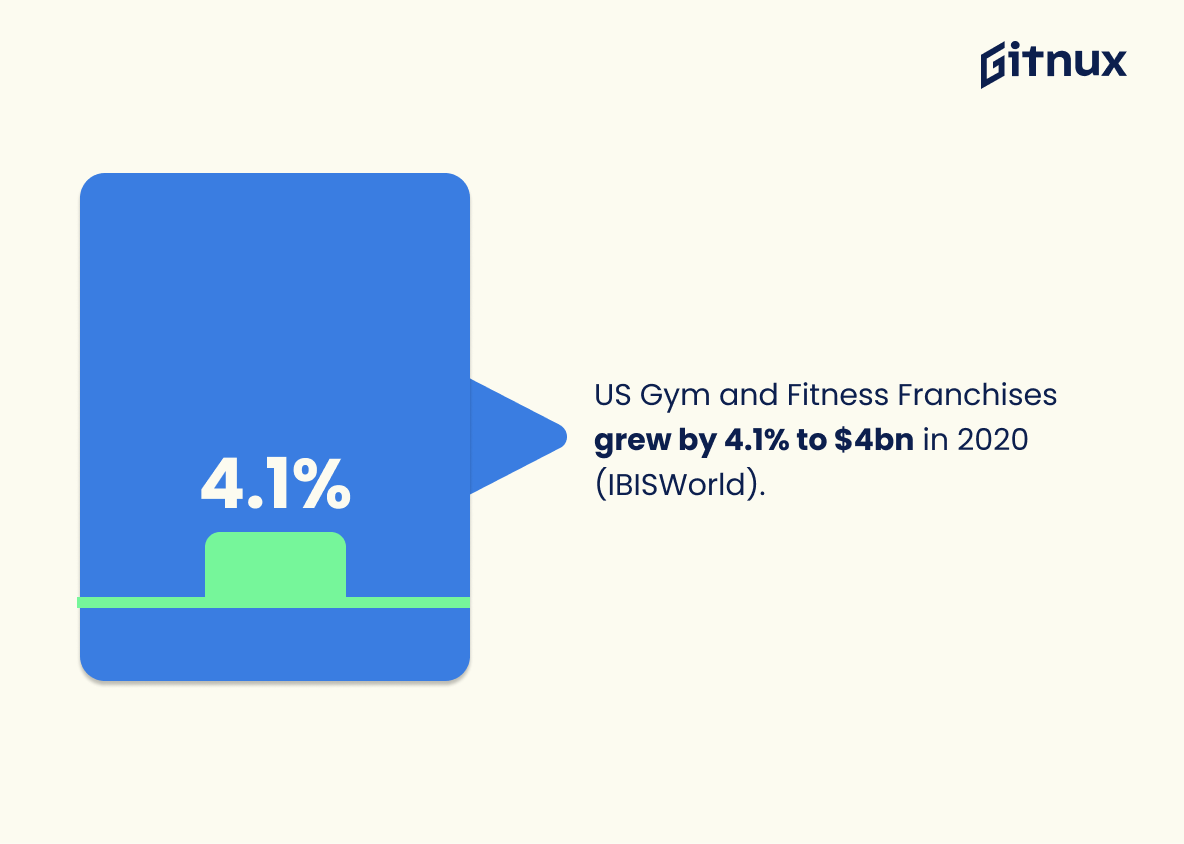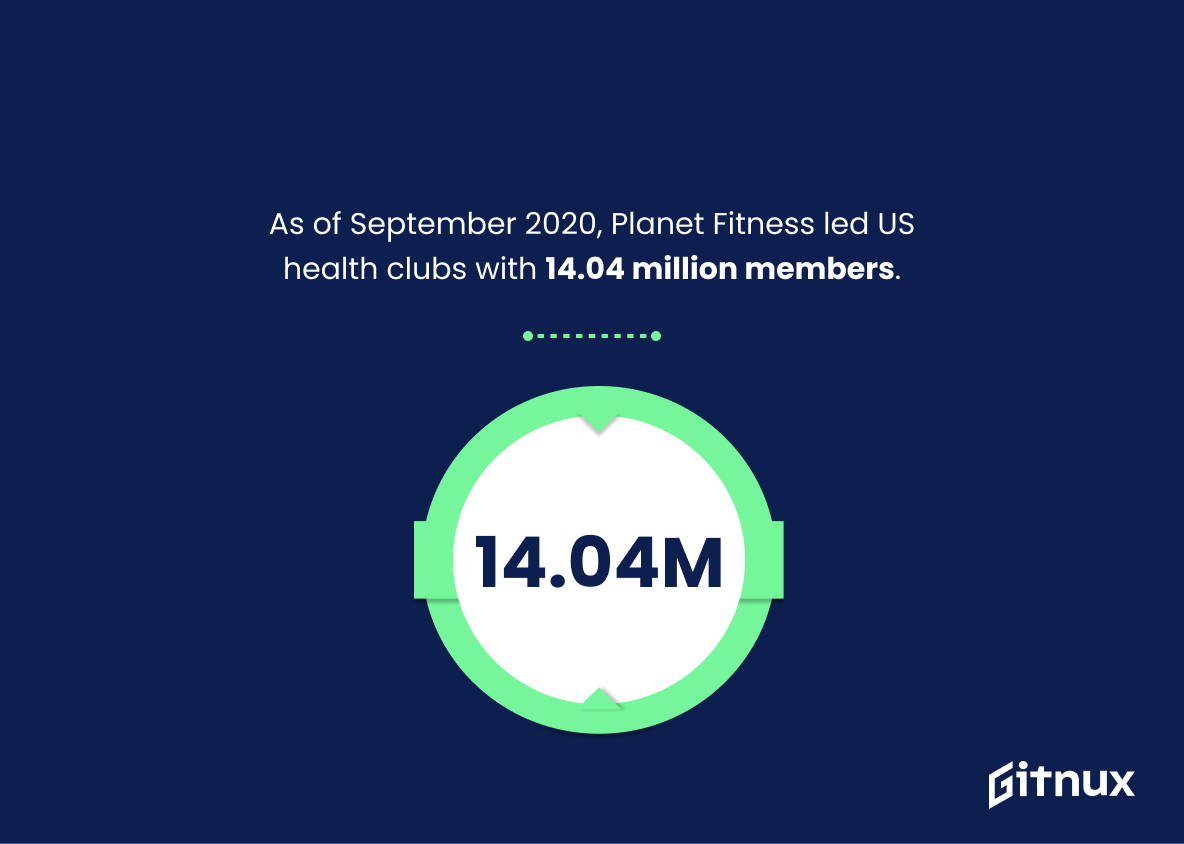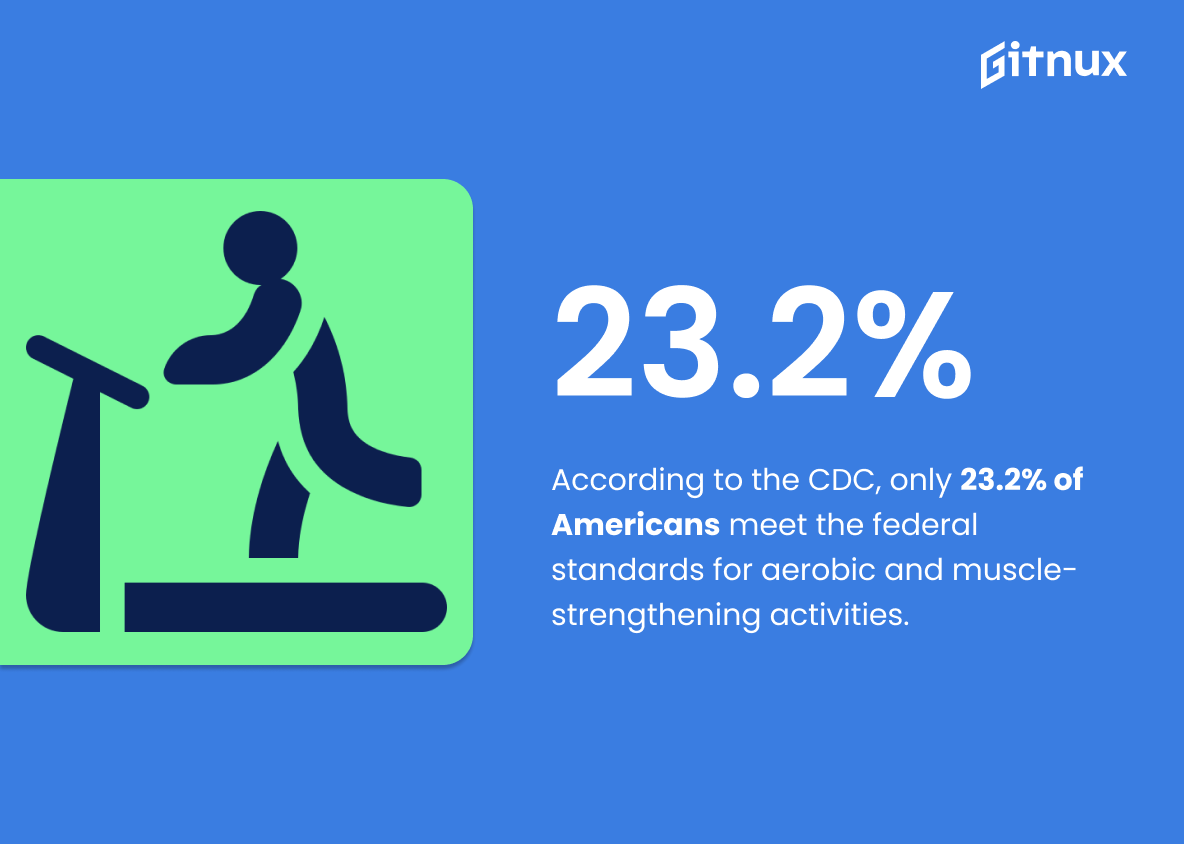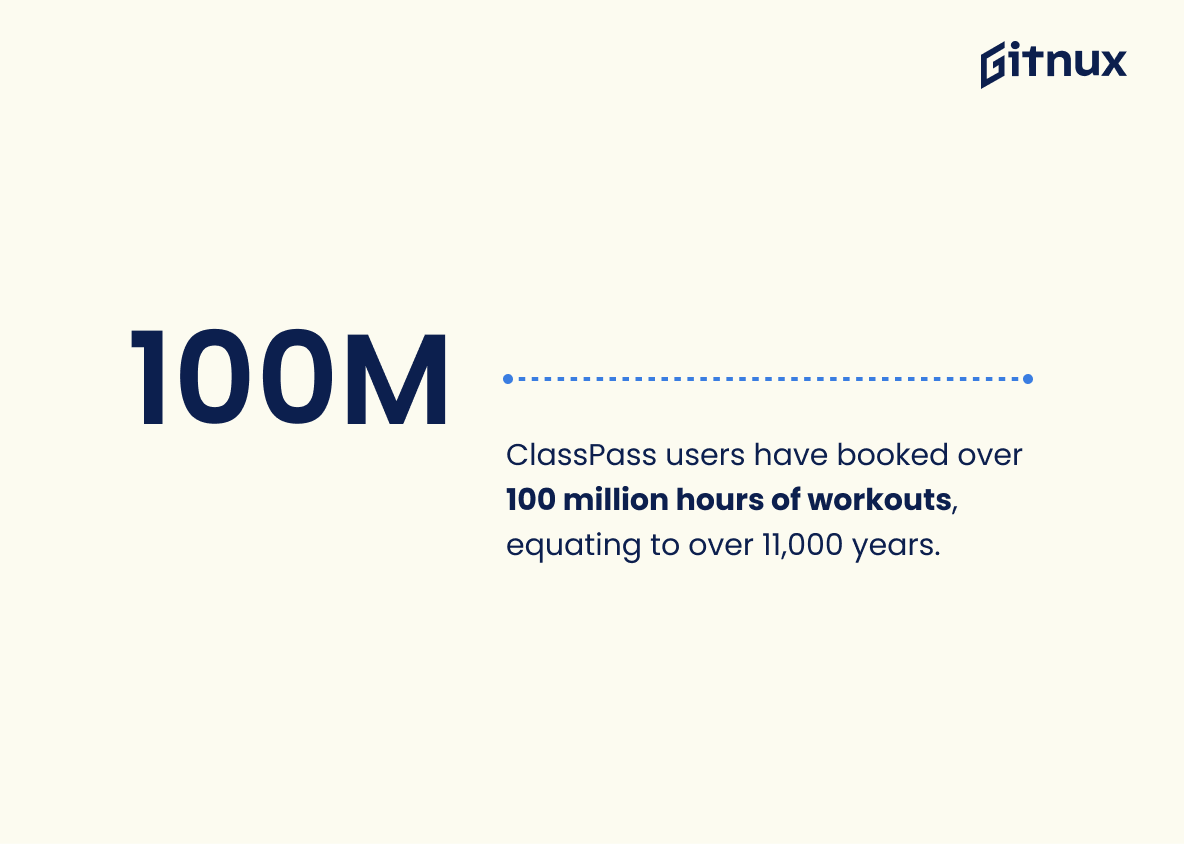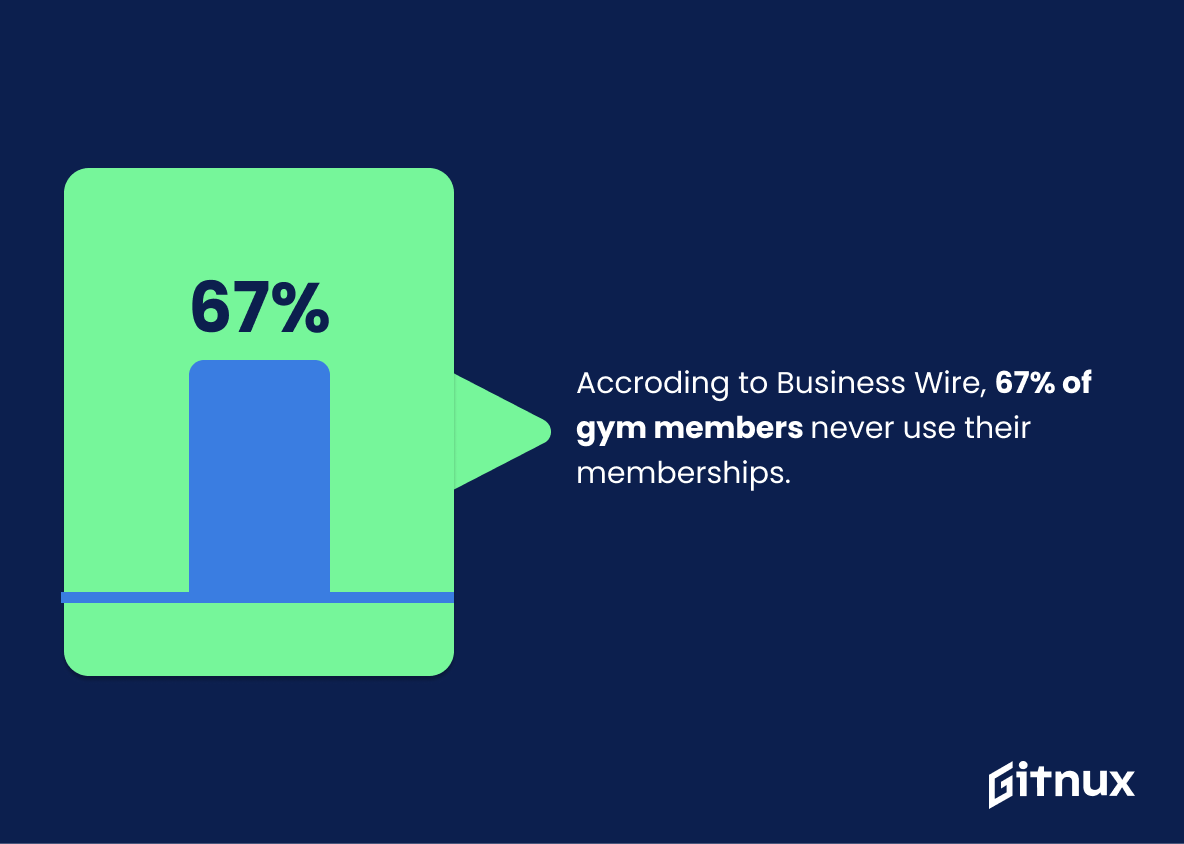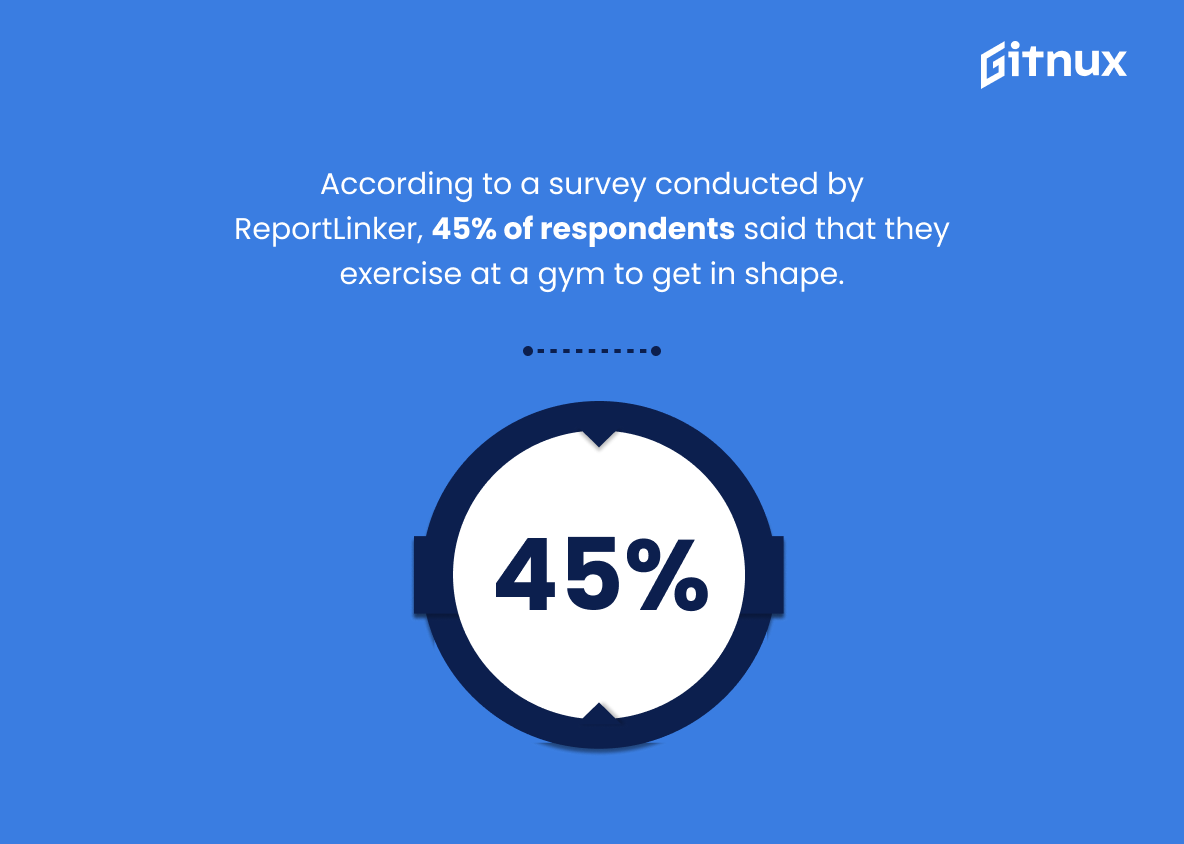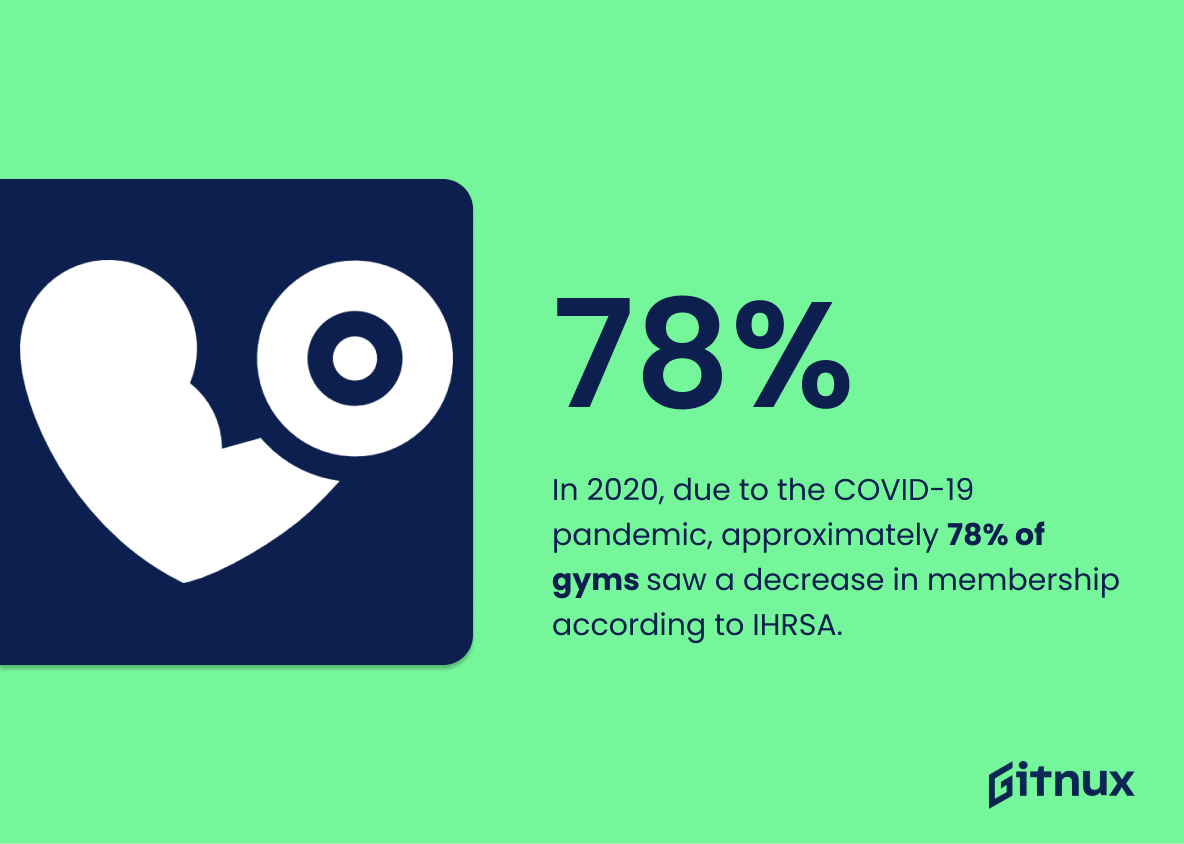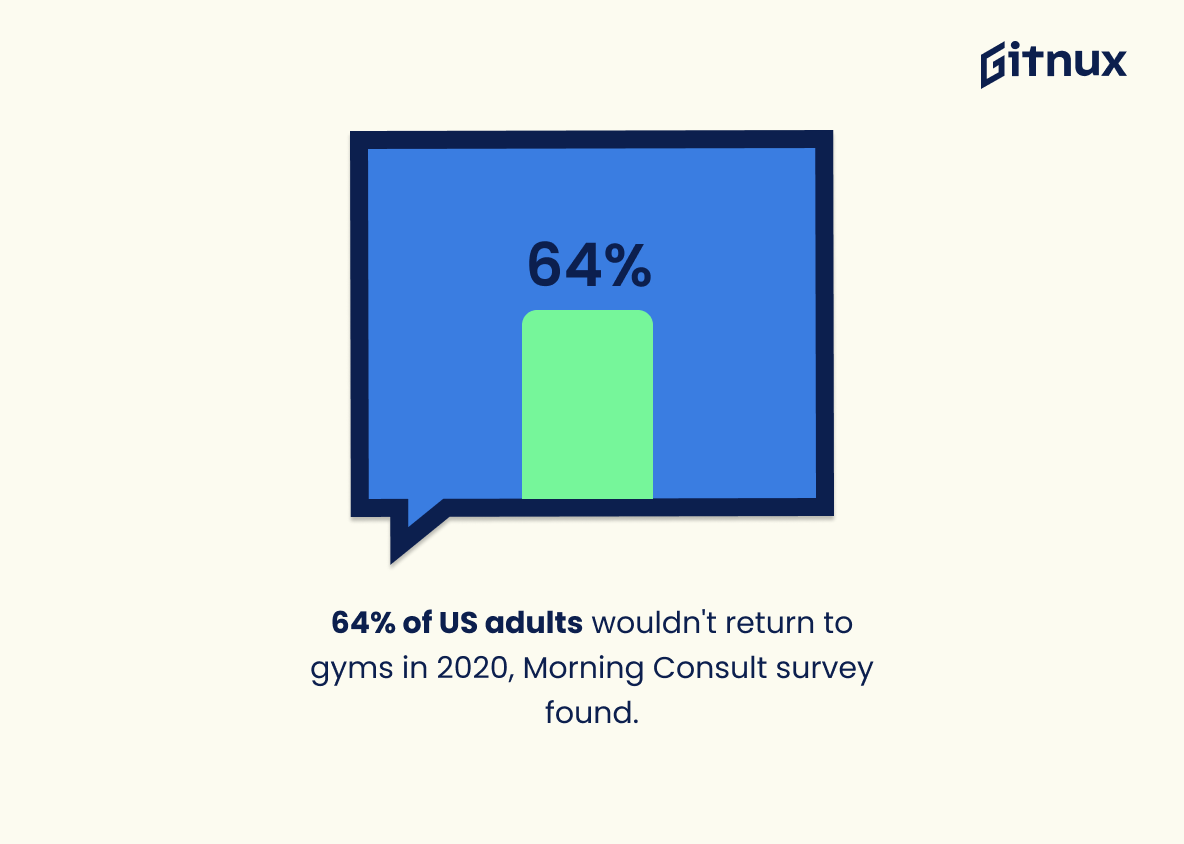Delve into the world of fitness with us as we break down the latest gym statistics and trends shaping the industry. The gym has become an integral part of many people’s lifestyles, contributing to both individual health goals and overall well-being.
Whether you’re a gym owner, fitness enthusiast, personal trainer or a curious reader, understanding these statistics can offer valuable insights into the shifting landscape of health and fitness, assisting you to better strategize, tailor workouts, or simply understand the changing dynamics of the fitness realm. Join us as we lift the weight and unravel the substantial data about gym attendance, popular workouts, industry revenues, and more. Are you ready to flex your knowledge muscles? Let’s dive right in.
The Latest Gym Statistics Unveiled
According to the IHRSA (International Health, Racquet & Sportsclub Association), 28% of American adults are gym members.
Painting a vivid picture of the fitness landscape, the statistic from IHRSA highlights that nearly three out of every ten American adults are sweating it out in fitness centers. This not only underscores the growing emphasis on fitness in the contemporary American society, but also reflects the potential market for gym owners and fitness professionals in the country. As such, this could fuel discussions on trends in health and wellness, and inform strategies for capturing this substantial portion of the population engrossed in gym activities.
As per Statista, the US had over 41,000 health clubs and gyms as of 2019.
This illuminating figure provided by Statista sheds light on the thriving fitness industry within the US. With over 41,000 health clubs and gyms reported in 2019, it underscores the booming demand for fitness spaces and the escalating interest in health and wellness. As we delve into more gym statistics, this crucial number sets the stage, demonstrating the immense scale at which the fitness industry is operating. This data point essentially acts as a powerful mile marker, guiding our deeper exploration into the scope, trends, and potential growth within the fitness realm.
In the UK, 14.5% of the population is a member of at least one of the 7,239 fitness facilities, accroding to Deloitte.
Painting a robust picture of the health and wellness landscape in the UK, this striking figure indicates that nearly a seventh of the population is actively seeking health through membership in one of the nation’s many fitness facilities. Deloitte’s data not only underscores the growing importance placed on physical health and wellbeing, but it also underlines the wide breadth of opportunities available for businesses operating in the fitness industry.
This, dear readers, is the perfect testament to the scale and potential growth that the UK’s gym market holds, making it an engrossing theme for entrepreneurs or stakeholders following fitness trends closely. Yet, it is also a compelling signal to all of us, drawing attention to the significant role exercise plays in our everyday lives, and the magnitude of our collective strive towards healthier lifestyles. Let’s further unravel the depths contained in this gym statistic.
The Gym and Fitness Franchises industry in the US has grown by 4.1% to reach revenue of $4bn in 2020 according to IBISWorld.
Delving into the dynamism of the US Gym and Fitness Franchises industry, it’s remarkable to note an uptick of 4.1% in growth, amassing a hefty revenue amount of $4 billion in 2020, a fact as presented by IBISWorld. This numerical leap paints an evocative picture of a booming industry, serving as a significant scorecard in the gym statistics narrative.
It grabs the spotlight not just as a proof-point representing the health-conscious trajectory of America, but also as an effective yardstick measuring the financial robustness of the fitness sector. Equity-holders, potential investors, entrepreneurs, and fitness enthusiasts alike, can harness this data to strategize, make informed decisions, or simply understand the market depth being plumbed by the gym and fitness franchises. This statistic hence becomes an indispensable touchstone in dissecting and discussing gym statistics.
As of September 2020, Planet Fitness is the leading health club and fitness center chain in the United States based on the number of members, with 14.04 million members.
Unveiling the crown jewel of our gym statistics, we draw our attention towards the impressive feat achieved by Planet Fitness. As of September 2020, this seemingly invincible fortress of fitness stands at the summit of health clubs and fitness centers in the United States. The colossal figure of 14.04 million members doesn’t just represent individuals. It’s an emblem of dedication and healthy lifestyles adopted by millions, outshinning all competitors.
The relevance of this statistic in a blog post about gym statistics is undeniable. It benchmarks the success of a fitness center and provides an influential model to both existing and upcoming health clubs. Moreover, it presents readers with a clear picture of popular preferences and trends in the fitness industry.
According to the CDC, only 23.2% of Americans meet the federal standards for aerobic and muscle-strengthening activities.
Integrating the mentioned statistic into a blog post about Gym Statistics opens our eyes to the startling revelation – a mere 23.2% of Americans adhere to the federal standards for aerobic and muscle-strengthening activities, according to the CDC. This serves as a clarion call, reminding us of the bulk of the population that doesn’t engage in regular or intensive workouts. It gives us food for thought, throwing light on the potential market space available in the gym and fitness sector.
It further underscores the essence of investing in fitness education, targeted marketing, and motivating gym programs to entice this broad segment of the populace to build stronger, healthier workout habits. Also, for existing fitness enthusiasts, it amplifies the dire need to consistently surpass these federal standards and inspire others, anchoring themselves as an example of fitness dedication. So, this statistic is a rallying cry for change and progress in the fitness landscape.
24 Life Time gyms hold concerts for members, according to the Life Time fitness company.
Delving into the world of gym statistics, an intriguing fact leaps out: 24 Life Time gyms dual-function as concert arenas for members. As we explore the fitness landscapes, such a unique attribute sets Life Time apart, offering a holistic approach to fitness. Not only does the brand focus on maintaining the physical vitality of its members, but it also values entertainment and socialization. This strategy could potentially increase membership attraction and retention rates, thereby influencing the overall statistics for gym participation.
In essence, every squat, leap and bead of sweat could be potentially powered by heart-thumping live music, adding a rhythm to workouts that few other fitness entities provide. That’s a noteworthy detail for gym-goers scanning the horizon for their ideal workout haven.
ClassPass users have booked over 100 million hours of workouts, equating to over 11,000 years.
The sheer magnitude of workout hours booked through ClassPass paints a vivid picture of the changing landscape of gym usage. This colossal figure, which equates to over 11,000 years, embodies the firm entrenchment of digital platforms in the fitness industry.
Not only does it emphasize the shift in consumer behavior towards flexible fitness solutions, but it also underscores the pivotal role ClassPass and similar platforms play in this digital revolution of wellness. This data serves as a potent testament, offering profound insights into how digital booking systems have literally reshaped the time-space dynamics of exercise in our era.
Accroding to Business Wire, 67% of gym members never use their memberships.
In the energetic world of gym statistics, the Business Wire’s revelation serves as a stark wake-up call. It spotlights that an astounding 67% of gym members have their memberships gathering dust rather than sweat. Unearthing this truth can reshape how gyms strategize their marketing efforts, targeting those that need an extra nudge to start their fitness journey.
Moreover, it also underlines the importance of digging deeper into understanding member habits and motivations, paving a path for more tailored programming and engagement. This gym statistic thus throws open a myriad of doors to explore in improving gym member retention and participation. Isn’t it fascinating how a silent majority can cause such a loud impact?
According to a survey conducted by ReportLinker, 45% of respondents said that they exercise at a gym to get in shape.
Delving into the realm of gym statistics, a spotlight shines on an intriguing piece of information. A survey orchestrated by ReportLinker reveals a captivating narrative: 45% of respondents are charging through gym doors to sculpt and hone their physique. This glimpse into gym-goer motivation is a crucial cog in our understanding machine. It brings to light the main intent powering the treadmills, fueling the free weights, and engaging the ellipticals—the pursuit of a healthier, more fit body image.
This allows trainers, gym-owners, and fitness industry marketers alike to tailor their strategies, thereby providing a more engaging and personalised experience to this significant segment of gym enthusiasts. On the flip side, the statistic also nudges those thinking of joining a gym towards doing so, as they realise they share similar goals with a considerable percent of existing gym-goers.
In 2020, due to the COVID-19 pandemic, approximately 78% of gyms saw a decrease in membership according to IHRSA.
Such an arresting statistic undoubtedly paints a vivid picture of the drastic impact that the COVID-19 pandemic has had on gym establishments in 2020. The reference to approximately 78% of gyms experiencing a drop in membership, as reported by IHRSA, serves as a stark emblem of the adaptation and struggle that unfurled within the fitness industry in the year of unprecedented challenges.
Within the tapestry of gym statistics, this information acts as a cornerstone, instructing readers about the broad influence of external factors on gym attendance and membership. It provides crucial context for anyone interested in understanding or researching the changes within the fitness landscape during the pandemic era. It’s a key link to the chain of cause-and-effect that allows us to comprehend the domino effect rippling through the industry, altering consumer behaviour and business models.
In a survey conducted by Morning Consult, 64% of adults in the United States said they wouldn’t feel comfortable going back to the gym during 2020.
Unveiling the apprehensions and reluctance of a 64% majority of adult Americans towards gym return during the 2020 survey conducted by Morning Consult, creates ripples in the fitness industry narrative. In a blog post discussing Gym Statistics, this result serves as a pivotal point, shedding light on the changing mindsets and behaviors around fitness during a socially-distanced era.
It not only suggests a transformative shift in workout routines, but also hints towards the potential rise in alternate fitness trends such as home workouts or virtual training sessions. These evolving patterns could shape the future direction of gym-related businesses, offering an insight that is both significant and timely.
Conclusion
In sum, the importance of gym usage and fitness cannot be understated in today’s high-pressure society. Statistics clearly paint a picture of an evolving fitness industry that’s catering to diverse workouts needs with increasing customization. From the surge in gym memberships to the rise in personal training, the gym industry is definitely here to stay and poised for future growth.
Whether you’re a gym enthusiast curious about trends, a gym owner aiming to meet market demands, or a fitness novice deciding to take the first major step towards a healthier lifestyle, these insights derived from gym statistics could be your guiding compass. Fostering fitness awareness and incorporating it into daily life is not just a trend—it’s a lifestyle. So, lace up your sneakers, and get moving for a healthier and happier you.
References
0. – https://www.www.lifetime.life
1. – https://www.www.cdc.gov
2. – https://www.www2.deloitte.com
3. – https://www.www.reportlinker.com
4. – https://www.classpass.com
5. – https://www.www.businesswire.com
6. – https://www.www.ibisworld.com
7. – https://www.www.statista.com
8. – https://www.www.ihrsa.org
9. – https://www.morningconsult.com

